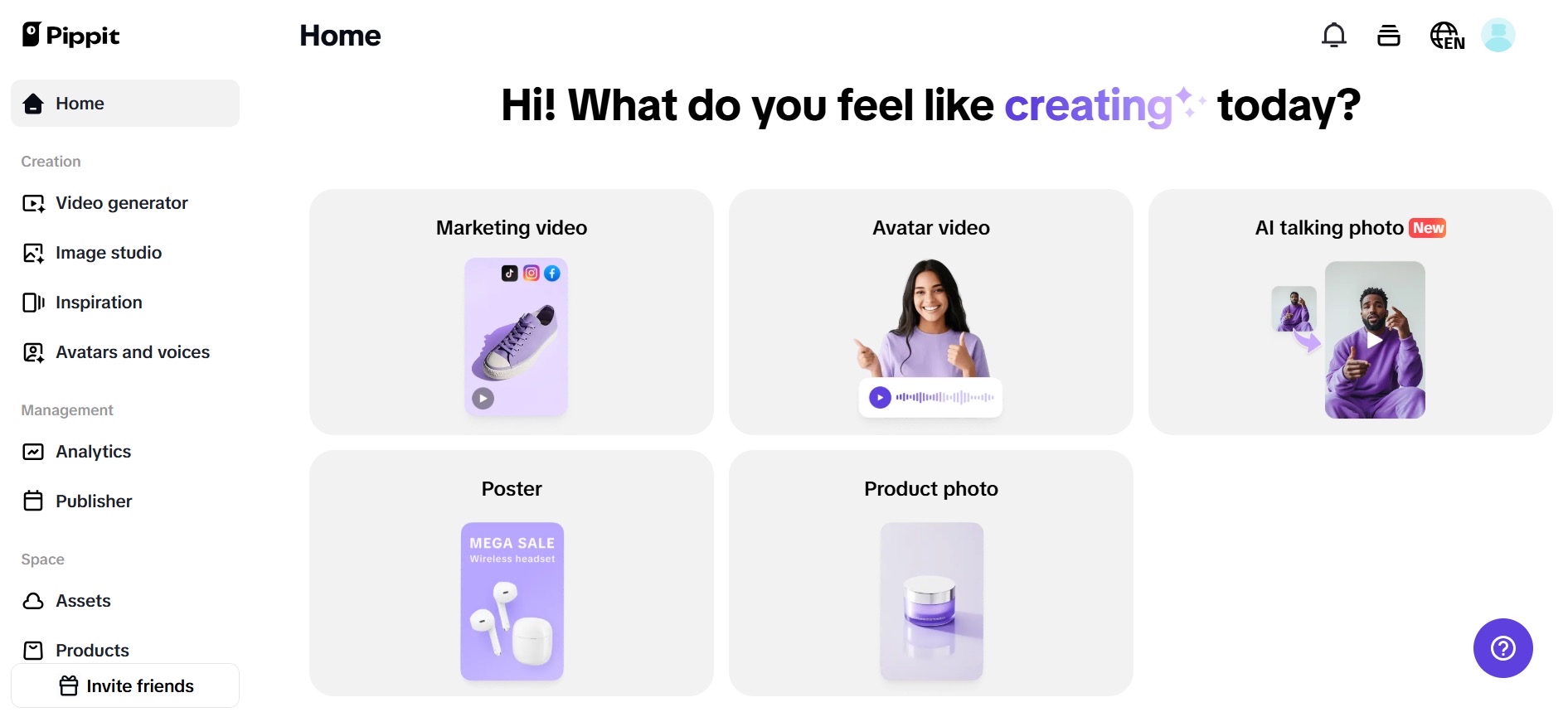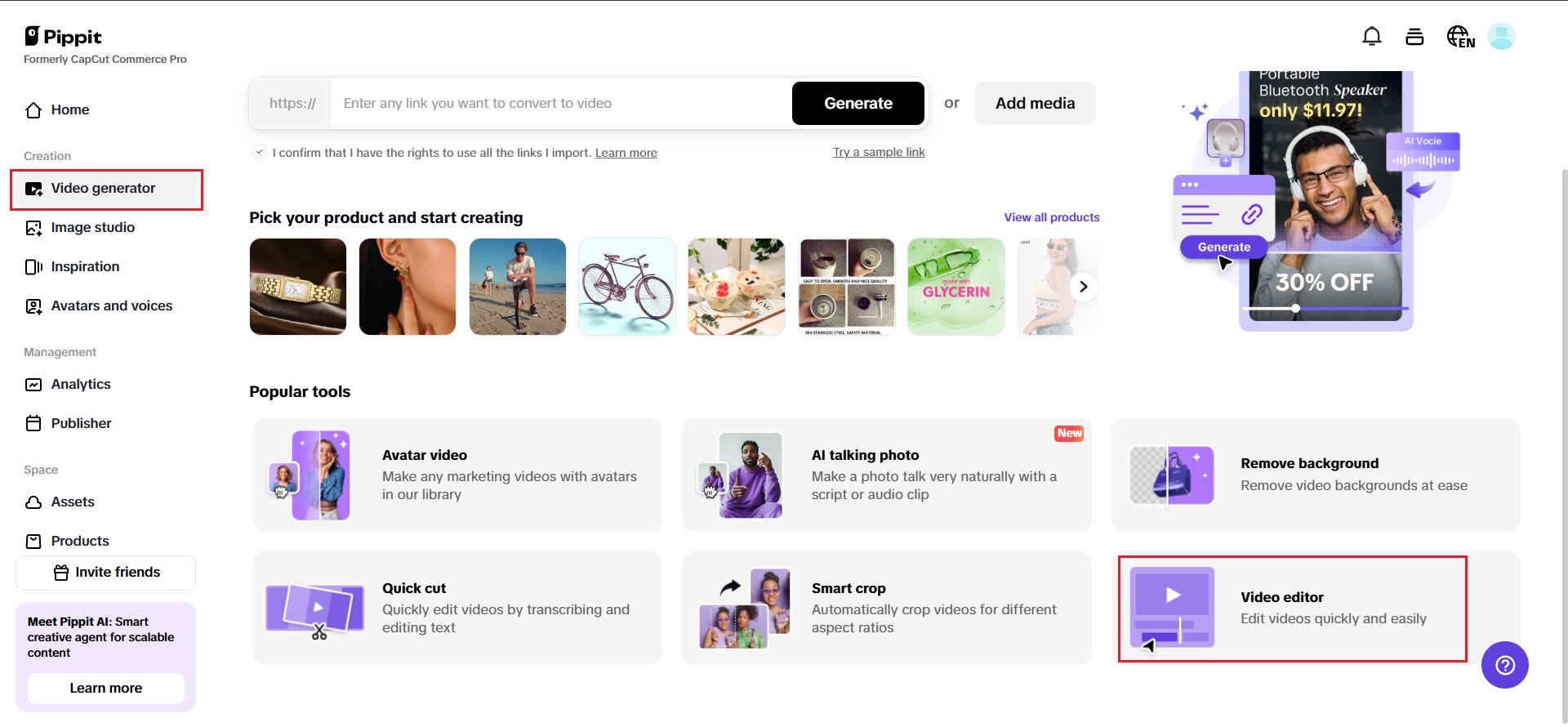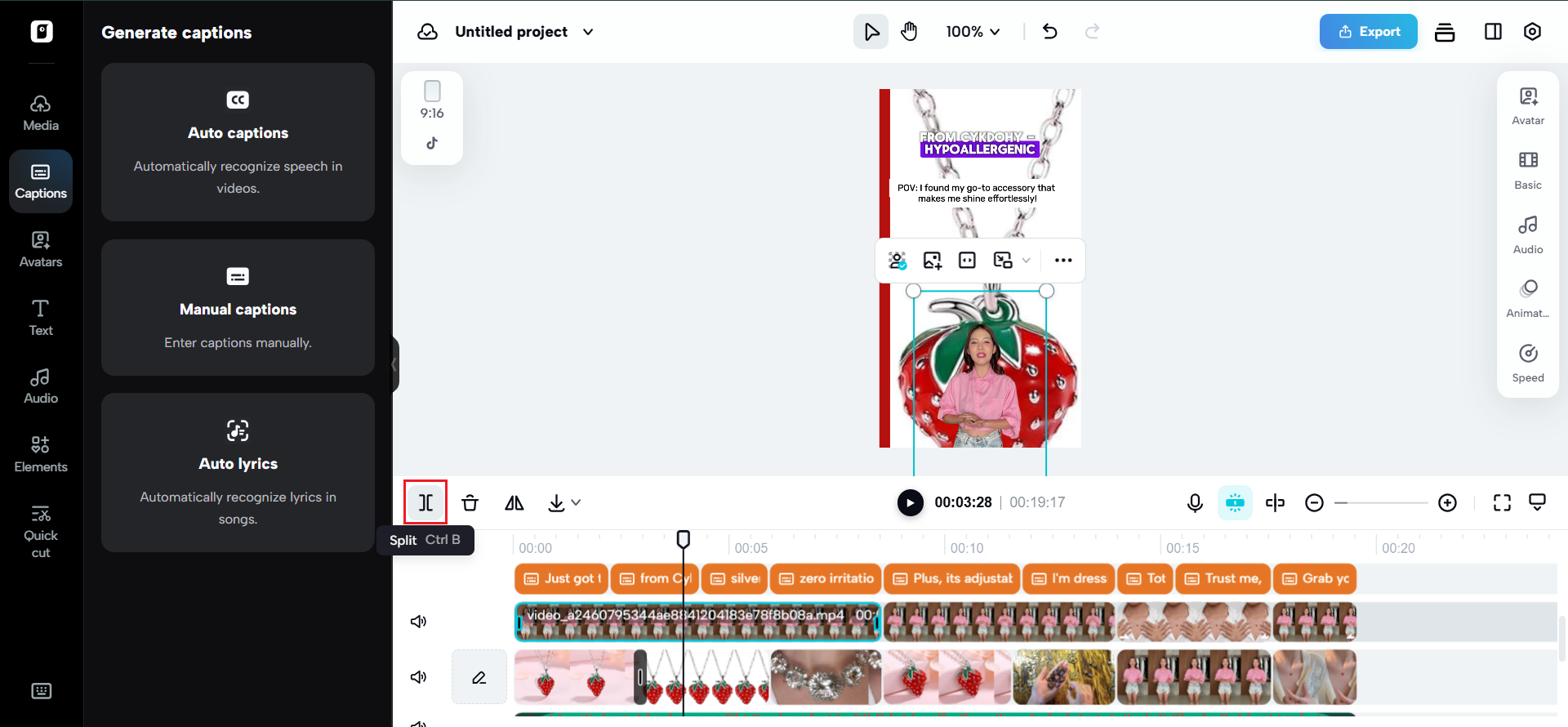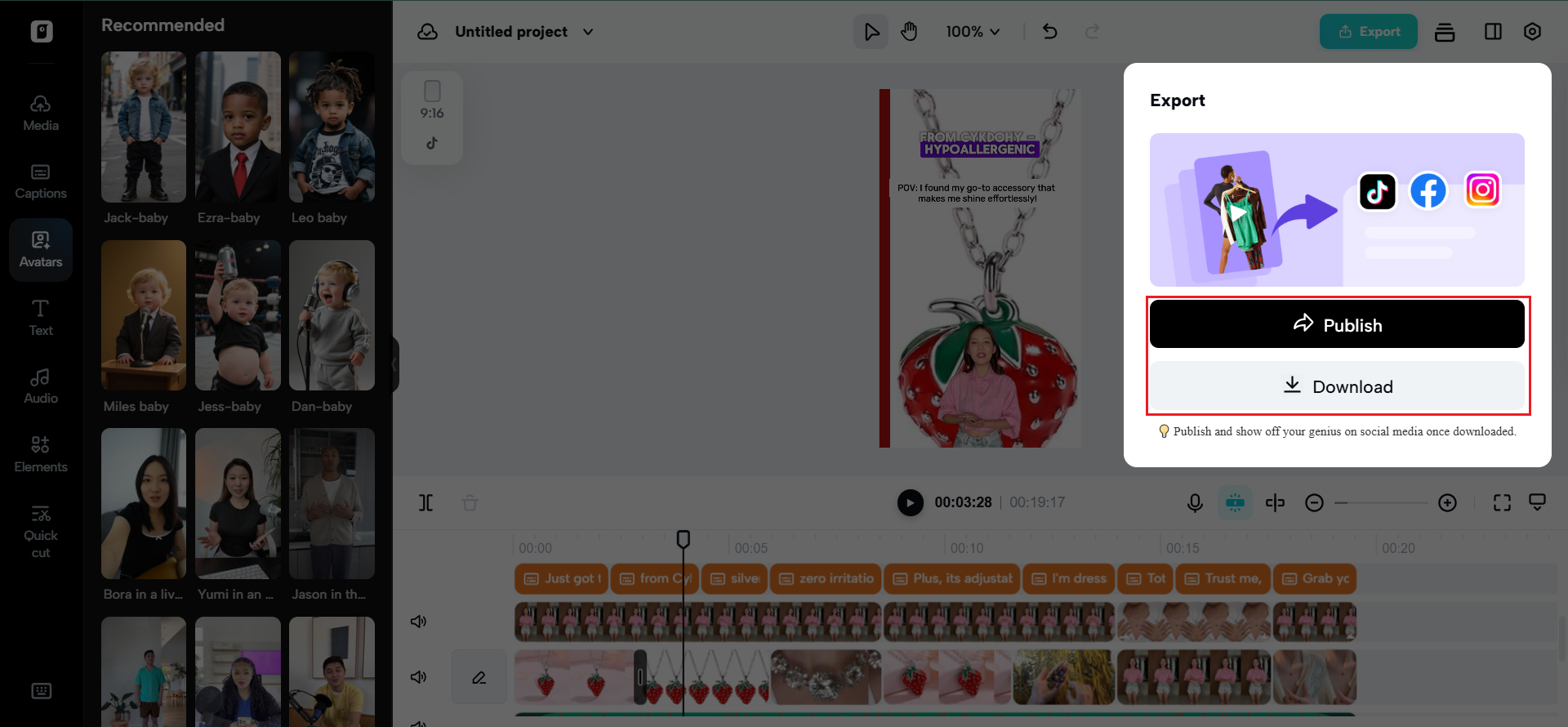In an age where attention spans are shorter than a TikTok transition, showing more in less time has become the creative holy grail. Enter split screen storytelling—the visual format that lets creators juxtapose two moments at once: progress and origin, teacher and learner, the “now” and the “how.”
Whether you’re reacting to your favorite haul, running a side-by-side tutorial, or staging a dramatic glow-up transformation, the ability to edit two timelines into one frame isn’t just a style—it’s a strategy. It engages faster, delivers context instantly, and doubles the emotional payoff without demanding double the screen time.

And with Pippit, the AI video editor built for solo creators and agile brands, this cinematic effect doesn’t require a production crew or Final Cut Pro wizardry. You can split screens, scenes, and storylines from your laptop—or your couch.
Parallel universes in pixels: why split screen storytelling hits harder
A single frame can only say so much. But when you place two stories Linkhouse beside each other—synchronized or in contrast—you turn passive watching into active decoding. The audience isn’t just consuming; they’re comparing, syncing, empathizing, analyzing.
Here’s where split screen especially shines on social:
Before/after edits: Whether it’s a makeover, room renovation, or recipe reveal, nothing emphasizes change like a side-by-side.
Duet challenges: Music collabs, acting scenes, or reaction videos thrive when creator and context share the screen.
Tutorials with reactions: Teach on the left, react on the right. A format that brings clarity and personality.
Progress tracking: Show Day 1 and Day 30 side by side—no need for long-winded explanations.
And it’s not just visual eye candy. It’s cognitive glue. Two perspectives in one frame builds a narrative bridge. The viewer feels like they’re in on something—and that makes them stay.
The silent power of timing: when two clips talk to each other
Timing is everything. Especially in split screen videos. Whether you’re matching beats to reactions, syncing spoken lines, or pacing a transformation, your video’s impact depends on how well your clips “talk” to one another.
Here’s how creators make the magic happen:
Micro-edits for macro impact: Trimming just 0.3 seconds before a laugh or a twist can heighten tension or punchlines.
Sound bridging: Let one screen’s audio lead while the other’s visuals fill in context. Perfect for reactions or commentary formats.
Visual anchors: Use symmetrical gestures or mirrored camera angles to create harmony even in contrast-heavy stories.
Split screen isn’t about slapping two clips together—it’s about orchestrating a duet where each side complements the other.
When to use a video splitter—and what it unlocks with Pippit
So, how do you bring these two clips together? That’s where a video splitter comes in. With the help of this tool, you may divide your movie into discrete seconds and align them perfectly or combine portions with surgical precision.
Before you dive into video splitting with Pippit, think of it like slicing puzzle pieces: each part has to fit, contribute, and contrast meaningfully.
Ready to bring your dual-perspective story to life?
Step 1: Launch the video editor
To get started, launch Pippit and choose the “Video editor” option from the “Video generator” screen. You may upload the video you wish to modify by browsing your device or by dragging and dropping your video file into the timeline. With this configuration, you can easily access your video and get it ready for splitting.

Step 2: Divide the video segments
Click the split scene icon after moving the timeline cursor to the correct split point to separate your movie into scenes. Additionally, you may utilise the “Split scene” option to automatically identify and divide your video at each scene change, which makes precisely separating clips easy.

After dividing your movie, you may quickly export the parts you want in the format of your choice. Adjust your export parameters to suit certain platform specifications or personal preferences for best results.

Duet-ready formats: which platforms love a split?
Each platform treats split screens a little differently, and knowing how your video will live helps you design smarter.
TikTok (9:16 vertical): Best for full-height vertical splits. Perfect for duets, “stitch” formats, or talking-head plus reaction combos.
Instagram Reels: Similar to TikTok, but benefits from bolder fonts and tighter crop zones. Prioritize symmetry and focus.
YouTube Shorts: Offers more real estate for captions, making split-screen tutorials feel more digestible and branded.
Pinterest Video Pins: Surprisingly powerful when used to show product + process side by side.
Split screen lets you serve multiple narratives in a single glance, and platforms reward that with higher watch time and more engagement.
Beyond side-by-side: remixing the split screen format
Don’t feel boxed in by just left-and-right. Creators today are experimenting with:
Top/bottom frames: Great for showing action above and explanation below (think recipe + instructions).
Multi-window layouts: Use up to 4 boxes for a “zoom-style” interaction or a trend recap.
Animated transitions: Let one screen morph into another to show a timeline or story arc unfolding.
Your creativity doesn’t need to stop at the crop line.
Split, sync, and shine—with zero complexity
Split screen isn’t just a trend—it’s the perfect format for showing growth, humor, contrast, or real-time reaction. It gives your audience a reason to pause, absorb, and share.
Whether you’re highlighting the “before” and “after,” reacting to viral content, or teaching alongside your own commentary, Pippit’s video splitter makes it ridiculously simple to pull it off. No heavy software. No timeline headaches. Just intuitive, AI-enhanced editing that works as fast as your ideas come to life.
Use Pippit today to split, resize, and remix your content—because every story deserves more than one angle.

